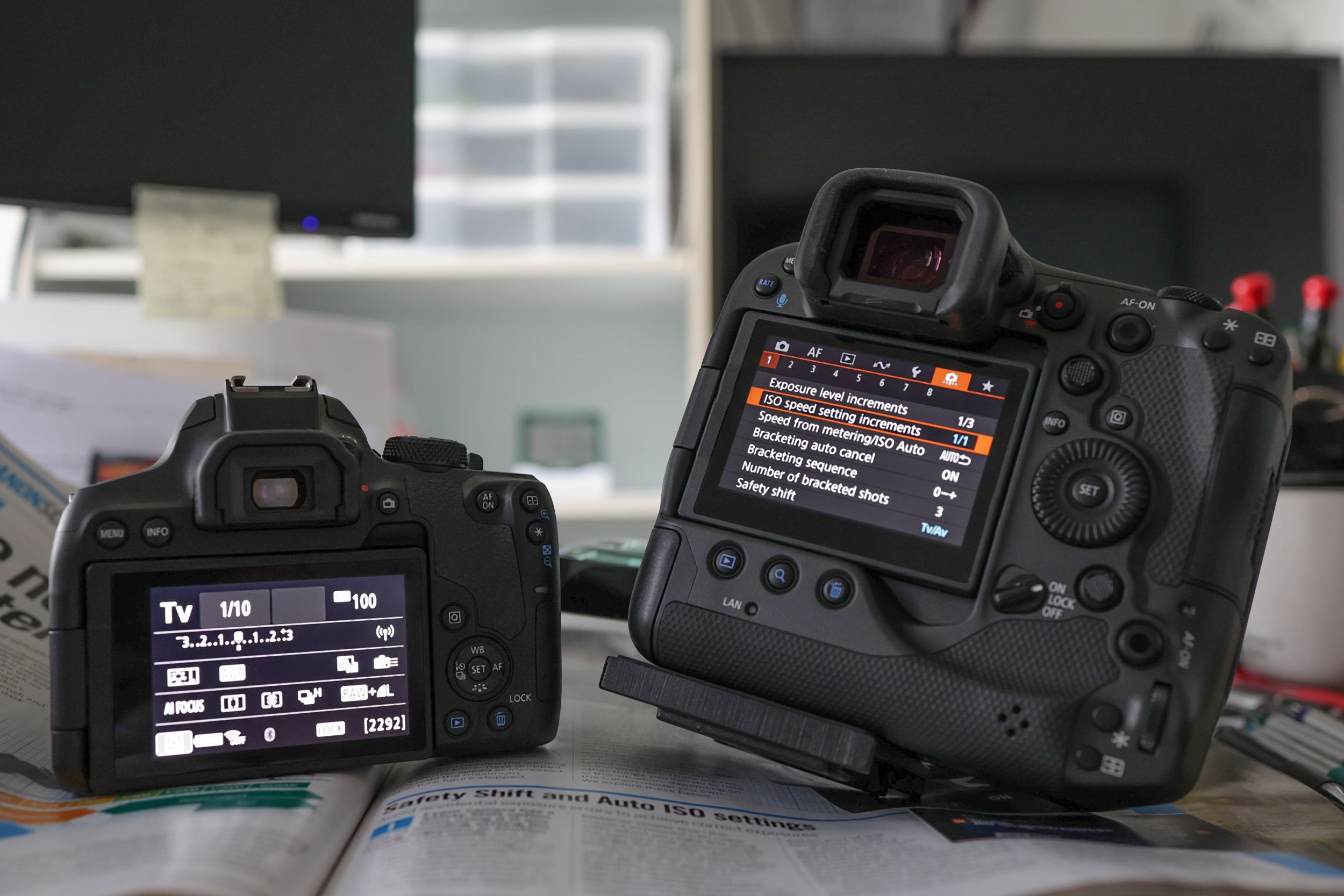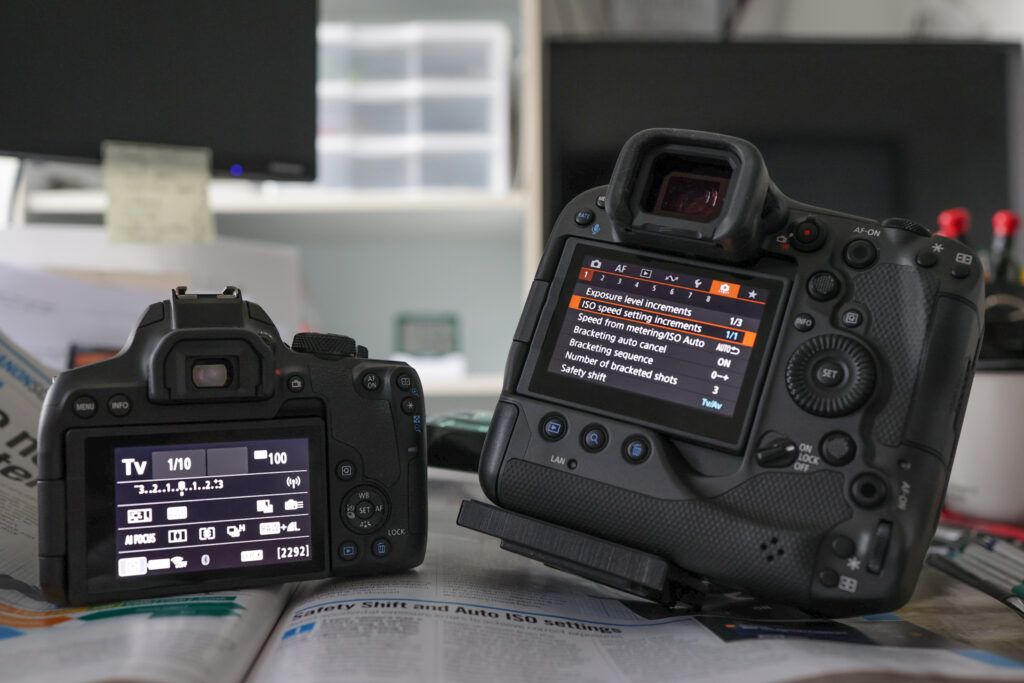Every digital camera has a sensor, and these come in a range of different sizes. The image sensor is a fundamental element of any camera, but with recent innovations in the technology world, it’s not always so simple to know what sensor size you should go for. In this guide, we’ll look at the different sensor sizes and run down the pros and cons of each.
Here’s what we’ll cover:
- What is a sensor?
- What are the different sizes of sensors?
- What is the crop factor?
- The pros and cons of different sensor sizes
Recommended Reading: If you’d like to improve your composition skills for better images, grab a copy of Photzy’s best-selling premium guide: Understanding Composition.
What Is a Sensor?
A camera’s digital sensor does the same job that film used to do in the film photography days. Back then, when you pressed a camera shutter, a small shutter opened and allowed light to hit the film for a fraction of a second. This then recorded light, color, contrast, and detail.
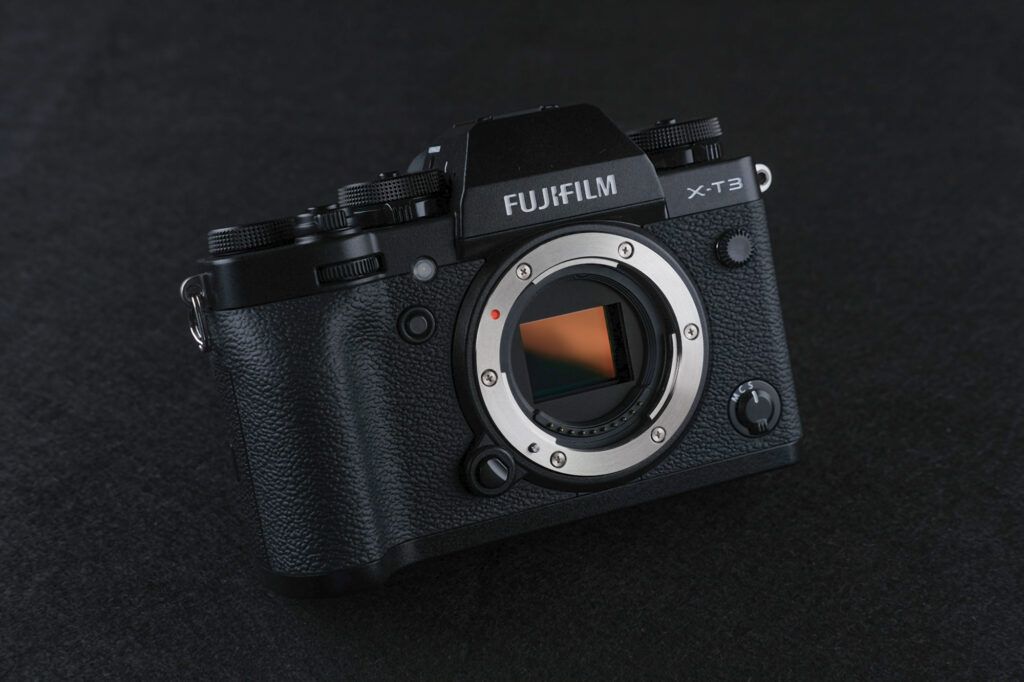
The camera sensor can be seen clearly here and replaces the film in a film camera. Photograph by Mulyadi
Key Lesson: With digital cameras, the sensor is a device that sits inside the camera and replaces what would have been filmed. A sensor houses millions of tiny light-sensitive receptors called photosites, which are counted as megapixels. They can range from 16MP up to 102MP. Remember that some cameras have low megapixels, but the individual photosites are bigger.
What Are the Different Sizes of Sensor?
Different cameras have different sensor sizes, with some manufacturers only developing cameras with one sensor size and others creating a range of sensor sizes for different photographic needs. Let’s look at each size in more detail.
- Medium Format – Medium format film cameras were commonly used by professionals, with brands such as Hasselblad and Mamiya being extremely popular. A handful of manufacturers, such as Hasselblad, Fujifilm, and PhaseOne, make medium-format digital cameras (and digital backs to go on old medium-format film cameras). As you’ve probably guessed, these cameras are extremely expensive, given their large camera sensor size and powerful processors. Sensor sizes range from 43.8mm x 32.9mm up to 53.7mm x 40.2mm.
- Full Frame – Full frame refers to a standardized 35mm sensor that replicates the size of 35mm film. The dimensions are 36mm x 24mm. Many pro-level DSLRs and mirrorless cameras have full-frame sensors, with these cameras having high megapixel counts and outstanding image resolution.
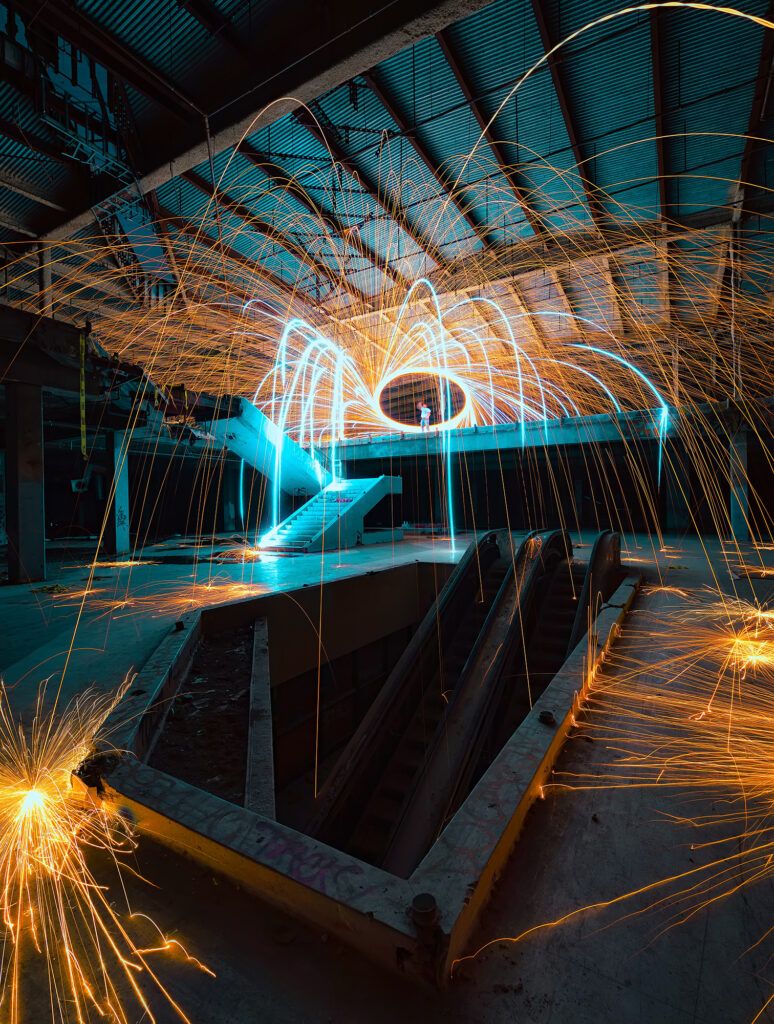
Full-frame cameras are particularly good in low light conditions and capture a large dynamic range. Photograph by Sean Pierce
- APS-C – APS-C stands for Advanced Photo System Type-C, with these cameras having sensors ranging from 20.7mm x 13.8mm up to 28.7mm x 19.1mm. The cropped sensor is again found in both DSLRs and mirrorless cameras, but these cameras are cheaper than full-frame versions.
- Micro Four Thirds – Micro Four Thirds (MFT) cameras are essentially made by two camera manufacturers, Olympus and Panasonic. Some cine cams, such as Blackmagic and Z Cam, also use MFT. The sensor size is 17.3mm x 13mm, with the name coming from the sensor’s aspect ratio of 4:3.
- 1-inch sensors – Point-and-shoot compact cameras, including high-end compacts such as the Sony RX100 series, use a 1” sensor. You’ll also find that smartphone technology incorporates a variety of 1” sensors.
What Is the Crop Factor?
You will have probably heard the term ‘crop sensor,’ which simply means a sensor that’s smaller than a full frame. It’s usually applied to APS-C cameras but can be used to describe the smaller MFT and 1” sensors as well. These crop sensors have a ‘crop factor’ that you need to consider when shooting with them, as the sensor effectively ‘crops’ the image area.
Key Lesson: In these cameras, the sensor is smaller than that of a full-frame camera. This means that when you put a lens onto them, you’ll end up with a different field of view depending on the crop factor (for example, a Canon APS-C camera has a crop factor of 1.6, meaning a 100mm lens on this camera will give you the equivalent field of view of a 160mm lens).
Here are the sensor crop factors:
- Medium Format – 0.79x
- Full Frame – 1x
- APS-C (general) – 1.5x
- APS-C (Canon) – 1.6x
- Micro Four Thirds – 2x
- 1” – 2.7x
The Pros and Cons of Different Sensor Sizes
I’m excluding medium format from this discussion as these are specialist cameras with a high price tag and the advantages are fairly obvious!
Full Frame
Full-frame cameras are seen as professional standard cameras, in both DSLR and mirrorless versions. Somewhat unfairly, APS-C and micro-four-thirds are regarded as the preserve of enthusiasts and those with smaller budgets (we’ll come on to why that’s not entirely accurate).
There’s no getting away from the fact that image quality on a full-frame camera is going to be superior, with lots of image detail captured. Because full-frame cameras have many photosites across a larger space, they’re best for low-light photography and achieving a higher dynamic range.
There’s no getting away from the fact that image quality on a full-frame camera is going to be superior, with lots of image detail captured.
A larger sensor handles higher megapixel counts better. A 50MP full-frame sensor will have larger pixels than a 50MP APS-C sensor. And it’s easier to achieve a shallow depth of field when using a full-frame sensor – you use longer focal lengths to achieve the same field of view and these longer focal lengths produce shallower depths of field.
On the flip side, full-frame cameras are expensive, as are decent lenses. And in general, full-frame cameras are much bigger and heavier than their smaller sensor cousins. Yes, there are some mirrorless cameras with full-frame sensors, but they’ll still be considerably heavier and larger than a crop frame alternative.
APS-C
One of the big advantages of APS-C cameras is that they’re normally smaller and lighter than full-frame cameras. The price tag is a lot lower as well, helping to make them an attractive option! If you shoot handheld, it’s easier to keep them stabilized, and in-body-stabilization (IBIS) systems tend to be more effective with smaller sensors.
Many APS-C cameras have a decent ‘frames per second’ (fps) rate as well; for example, the Canon R7 offers up to 30fps, in a camera that’s a fraction of the cost of equally quick full frame cameras like the Nikon Z9, and the Canon EOS R3. The crop factor also works in your favor at the telephoto end with the equivalent field of view getting you far closer to your subject with a smaller, lighter, and cheaper lens.
But at the wide-angle lens, the crop factor means you’ll need to buy dedicated APS-C lenses to get a wide enough field of view (although, these lenses do tend to be much cheaper). As the sensors are smaller, these cameras aren’t generally as good at shooting in low light and have a smaller dynamic range.
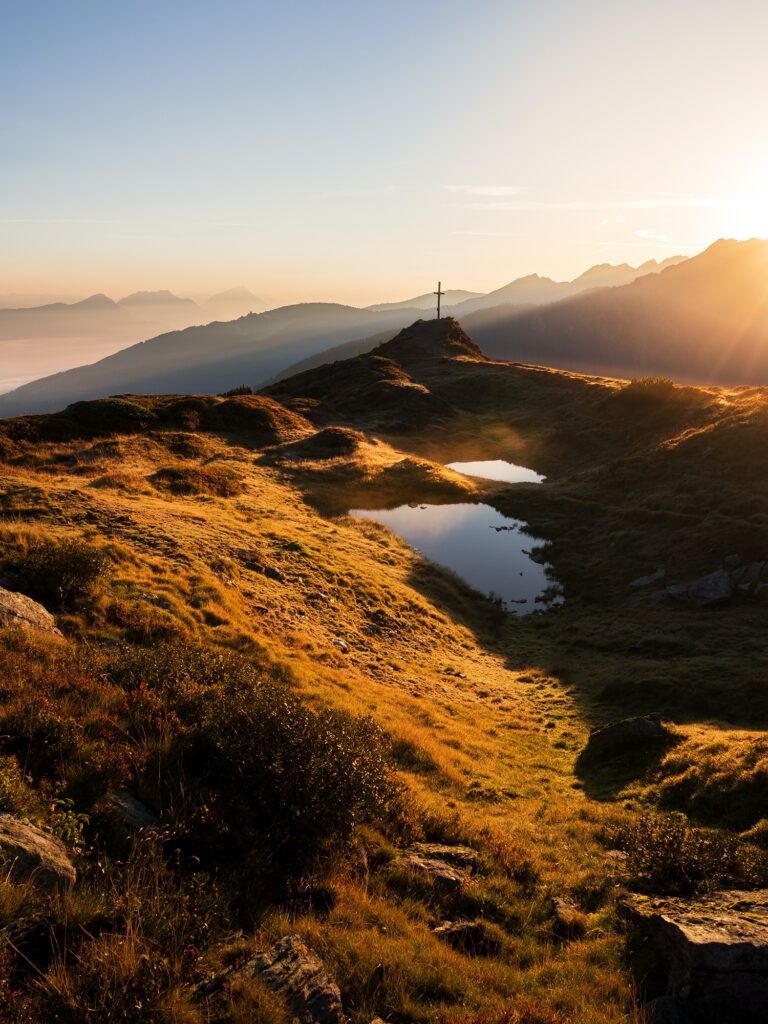
Micro-four-thirds cameras are a wonderful choice for travel and wildlife photographers as they are lightweight and extremely portable. Photograph by Jan Krepčík
Micro Four Thirds
With a 2x crop factor, MFT cameras are a perfect choice for wildlife photographers (a 400mm lens will give you the equivalent field of view of an 800mm lens, for example). You can get up close and personal for a lot less money, plus the cameras and lenses are incredibly lightweight and portable. Like APS-C cameras, they’re generally cheaper than full-frame options.
With a 2x crop factor, MFT cameras are a perfect choice for wildlife photographers
Modern Olympus and Panasonic MFTs perform, in my mind, way better than you would expect and the image quality on these cameras is astonishingly good. I’m a huge fan of the Olympus (OM systems) cameras myself and love the portability of the kit. Weight-wise, these cameras are a godsend.
The biggest downside of MFTs is their performance in low light, with the size of the sensor meaning fewer photosites and therefore less light captured by the sensor.
1”
A quick note on 1” sensors. These cameras can still capture a decent holiday snap and the lightweight nature of point-and-shoot cameras means they’re a great option to pop in your pocket for everyday photography. And of course, we all tend to always carry a smartphone with us. Again, the cameras on our phones are great for unexpected snapshots when we’re out and about.
Smartphones make use of something we call computational photography, which is a term used to describe techniques such as machine learning, AI, algorithms, image stacking, and more. This allows us to create images that shouldn’t be possible with the limitations of the tiny sensor in the phone. I’ve discussed AI in detail before, but to my mind, these images often look computer-generated and lack much of the charm you’d normally find in a beautiful image.
Conclusion
Camera sensor sizes can be confusing and there’s a lot of information about them to take in. But each size has its pros and cons, as well as its specific uses. There’s not really a right or wrong size to choose, as each different sensor size suits different people. Think about the types of subjects you like to shoot, the budget you have, and the weight you want to carry around before you decide.
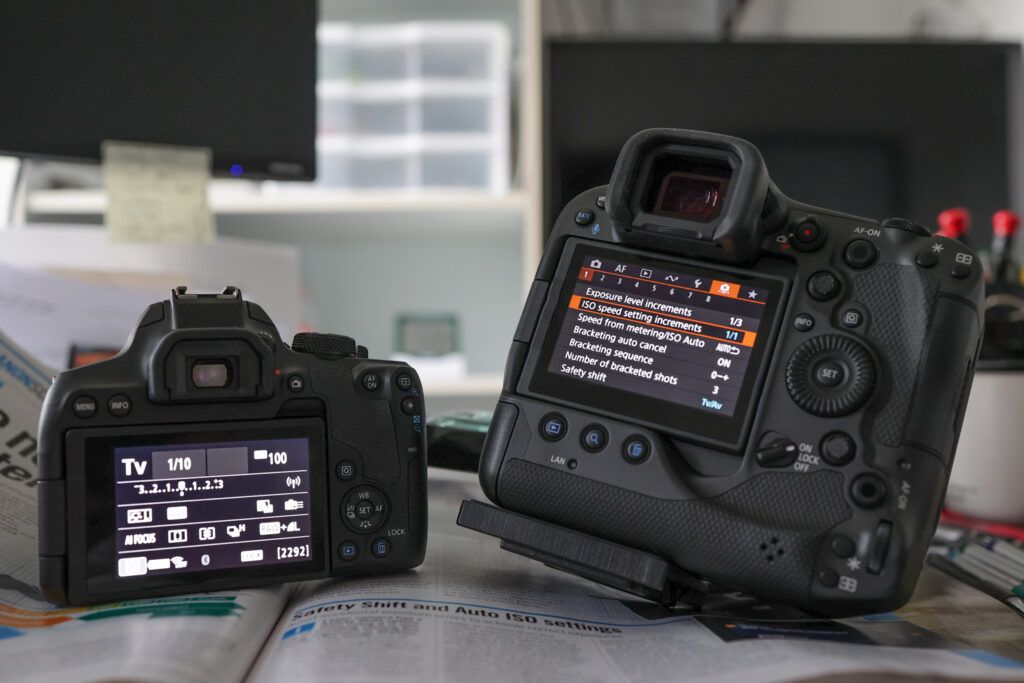
Recommended Reading: If you’d like to improve your composition skills for better images, grab a copy of Photzy’s best-selling premium guide: Understanding Composition.
Self-Check Quiz:
- What are the light-sensitive receptors in a camera sensor known as?
- Name the main types of camera sensors.
- What crop factor does a Canon APS-C camera have?
- Name two advantages of a full-frame sensor.
- Name a disadvantage of an APS-C sensor.
- What is computational photography?


